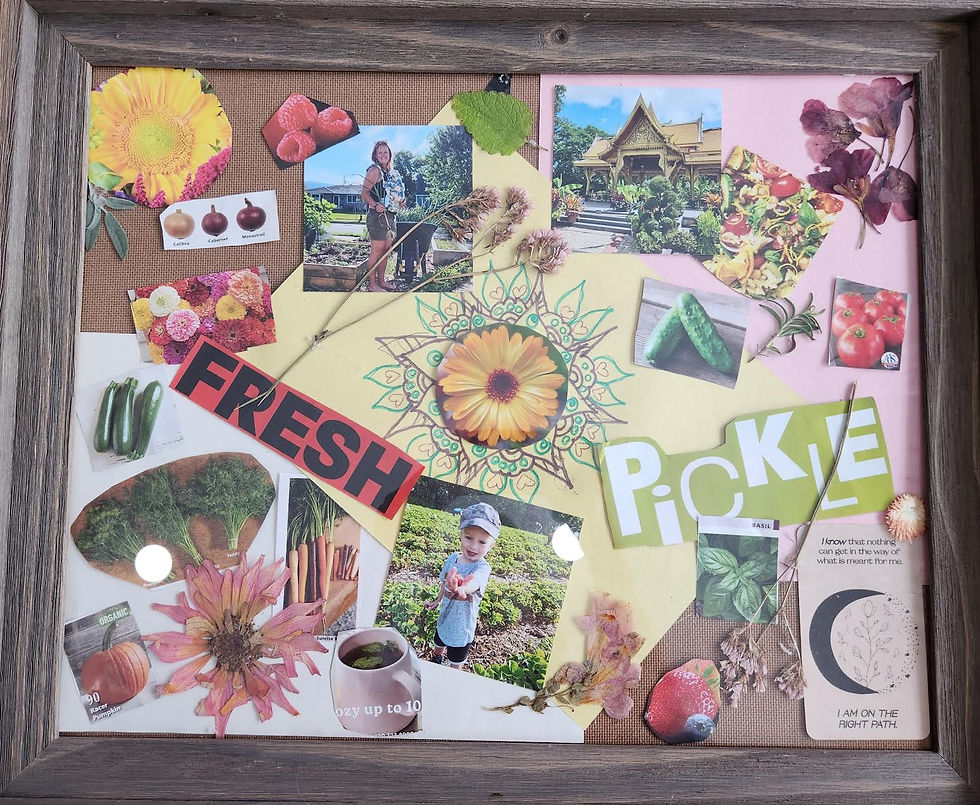"It's Alive!" - How to wake up that sourdough
- honagoods1
- Mar 16, 2023
- 3 min read

You will need:
Small glass jar with lid either an 8 oz or 16 oz
I use these - https://amzn.to/3ZKGZ7q
Warm filtered water, room temperature or slightly warmer
Fork or spoon to stir
Flour: To start you can use any type you have in the cabinet, I used white flour to reactive mine. Some people choose to use organic, wheat, rye, or bread flour, to feed regularly, but to start, use what you have on hand.
King Arthur brand is my favorite! https://amzn.to/3yIYEjU
Time! This process takes a few days because you don't want to overwhelm the sourdough starter by dumping heaps of flour onto it at once, that's a lot of pressure for the little babe! You should set aside a few minutes each day, roughly 24 hours apart to care for the starter through feeding flour and water. It worked best for me to feed it every morning around 7am. Do what works for you and set a reminder if you need to!

Day 1
Pour your active starter powder into your jar. Mix your alive starter (about 1 half tablespoon) with 1 1/2 tablespoons of warm water. Add 1 tablespoon of flour. Mix, cover and set aside in a warm-ish spot in your home. The optimal temperature is about 70 degrees, but do not worry it will still wake up if your home isn't that warm.
Your starter should be the consistency of thick pancake batter.



Day 2
Come back to your starter roughly 24 hours later. Add 1 tablespoon of flour and 2 teaspoons of water to your starter mixture jar. Mix, cover and set aside until tomorrow.

Day 3
At this time, you should notice bubbles forming in your starter. The process of yeast feeding on the flour has begun! Again, you will add 1 tablespoon of flour and 2 teaspoons of water. Mix and cover, set aside until tomorrow.

Day 4
Add 1/3 cup flour and 1/4 cup water, mix until most of the clumps are broken up. Draw a line with a glass marker. I use these https://amzn.to/3TBgxLr
You will begin to see the rise of your starter, note throughout the day how it has grown. You will be able to tell if it has rose and fell if there are marks on the insides of your glass jar.
At this point your starter is growing stronger and will be ready for you to bake with soon!

Day 5
Transfer your starter to a bowl for the addition of more flour and water. Mix starter with 1 cup of flour and 1/2 cup of warm water.
Transfer the mixture to a larger Mason jar or glass jar with a lid.
Mark the level of the starter on the side of the jar.
Watch throughout the day. Normally starter will reach peak activity about 5-6 hours after "feeding" but your home may be different depending on the temperature and humidity.
When you starter has reached peak activity it appears bubbly and will have doubled or tripled in size. (Hence why marking the jar is necessary). At peak activity your starter is ready to bake with.
Mix to remove bubbles and add the required amount of starter to your recipe.
*Refer to your recipe to determine how much starter you will need, as this will give you an idea of how much starter volume to maintain on an ongoing basis.

Ongoing care:
I use my starter at peak activity and then put in the fridge for a week. When I am ready to bake another loaf of bread, I remove it from the fridge the day before to allow it to get to room temperature.
I then discard a small portion, about 20 grams of starter, to the compost or save it for a discard recipe.
I then feed the starter with equal parts flour and water, mixing in a bowl and returning it to my 32 oz Mason jar. For example, I measure out 120 grams of starter, add 120 grams of warm water and 120 grams of flour.
I mark my jar and wait until the afternoon to add the peak activity starter to my focaccia recipe!
After I use the starter for my bread, I return it to the fridge for another week.
You can make as many recipes as you want with your starter - it is simple to use it at peak activity and feed it again and again with equal parts, flour, starter and water before returning it to the fridge.
On the other hand, you can keep it at room temperature for ongoing use, but you will have to discard and feed every day to keep it healthy and alive!





Comments